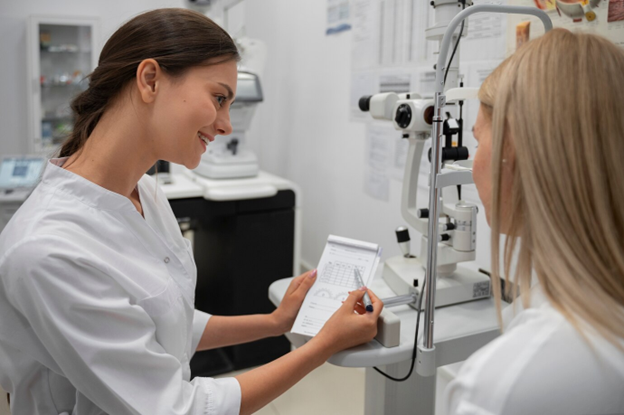Maintaining good eye health is crucial, especially in India, where environmental factors like dust and pollution can affect the eyes. Many Indians struggle with identifying various eye issues. Ectropion is often mistaken for other conditions, making awareness vital. By distinguishing ectropion from other eye problems, we can understand its unique impact and seek timely treatment. Knowing about different eye conditions helps us manage them better and prevent more serious issues down the line. In this blog, we focus on distinguishing ectropion from other common eye conditions, highlighting their symptoms and encouraging proactive eye care.
Understanding Ectropion
Ectropion is a condition where the eyelid turns outward, exposing the inner surface. This can lead to discomfort, tearing, and even damage to the eye surface. People experience watery eyes, redness, and irritation. Several factors can cause ectropion, including aging, which weakens eyelid muscles. Harsh environmental conditions, often found in India, and lifestyle habits also play roles.
Risk factors include: – Aging, as muscles lose elasticity. – Previous surgeries or trauma to the eye area. – Long-term exposure to pollution and dust.
Symptoms of ectropion include: – Constant tearing or watery eyes – Chronic irritation – Sensitivity to light
These symptoms can reduce quality of life, hence why awareness and early detection are critical.
Conjunctivitis (Pink Eye)
Conjunctivitis, also known as pink eye, is an infection or inflammation of the eye’s outer layer. It can be viral, bacterial, or allergic. Viral and bacterial types are contagious, spreading easily. Symptoms include redness, itchiness, and a gritty feeling in the eye. Treatment varies: – Viral conjunctivitis often resolves on its own. – Bacterial conjunctivitis might need antibiotic drops. – Allergic conjunctivitis improves with allergy medications.
Understanding these differences helps in managing symptoms effectively and preventing spread.
Cataracts
Cataracts cloud the eye’s lens, leading to blurred vision. They are common among older adults but can occur earlier. Look out for signs like cloudy vision, difficulty seeing at night, and sensitivity to light. Preventive measures include wearing sunglasses to protect against UV rays and maintaining eye health through a balanced diet. When cataracts impede daily life, surgery is an option that significantly restores vision.
Glaucoma
Glaucoma involves damage to the optic nerve, often due to high eye pressure. Its types include open-angle and angle-closure glaucoma. Early detection is crucial, as it can lead to permanent vision loss. Regular eye exams are essential to catch it early and prevent irreversible damage.
Age-related Macular Degeneration (AMD)
Age-related Macular Degeneration affects the central part of the retina, indispensable for sharp vision. It comes in wet and dry forms. Risk factors include age, smoking, and genetics. Symptoms range from blurred central vision to difficulty recognizing faces. While there’s no cure, treatments can slow progression and alleviate symptoms. Managing risk factors helps retain vision quality for longer.
Seeking Medical Attention: When is it Necessary?
Some eye symptoms demand immediate attention: – Sudden vision changes – Severe eye pain – Persistent redness or irritation
Prompt treatment can prevent complications. Regular eye check-ups are important even without symptoms, ensuring any issue is caught early. Timely intervention is the key to preserving vision.
Proactive Prevention and Eye Care Tips
Healthy habits play a big role in maintaining good eye health. Here’s how you can protect your eyes: 1. Use Protective Eyewear: Always wear sunglasses outdoors and safety glasses if engaging in risky activities. 2. Maintain a Balanced Diet: Include leafy greens, fish, and nuts. In India, regular intake of turmeric and carrots can support eye health. 3. Stay Hydrated: Drink plenty of water to keep eyes moist. 4. Limit Screen Time: Take breaks every 20 minutes to reduce strain. 5. Be Mindful of Air Quality: Use air purifiers and avoid exposure to smoke and irritants.
These simple lifestyle changes can go a long way in protecting your eyes from environmental harm.
Conclusion: Taking Charge of Your Eye Health
Your eye health is in your hands. By understanding conditions like ectropion and their symptoms, you can seek timely help and adopt preventative measures. Place importance on regular check-ups and proactive eye care. By doing so, you safeguard your sight and ensure your eyes remain healthy, contributing to a better quality of life. Being informed is the first step to taking charge of your eye health.

